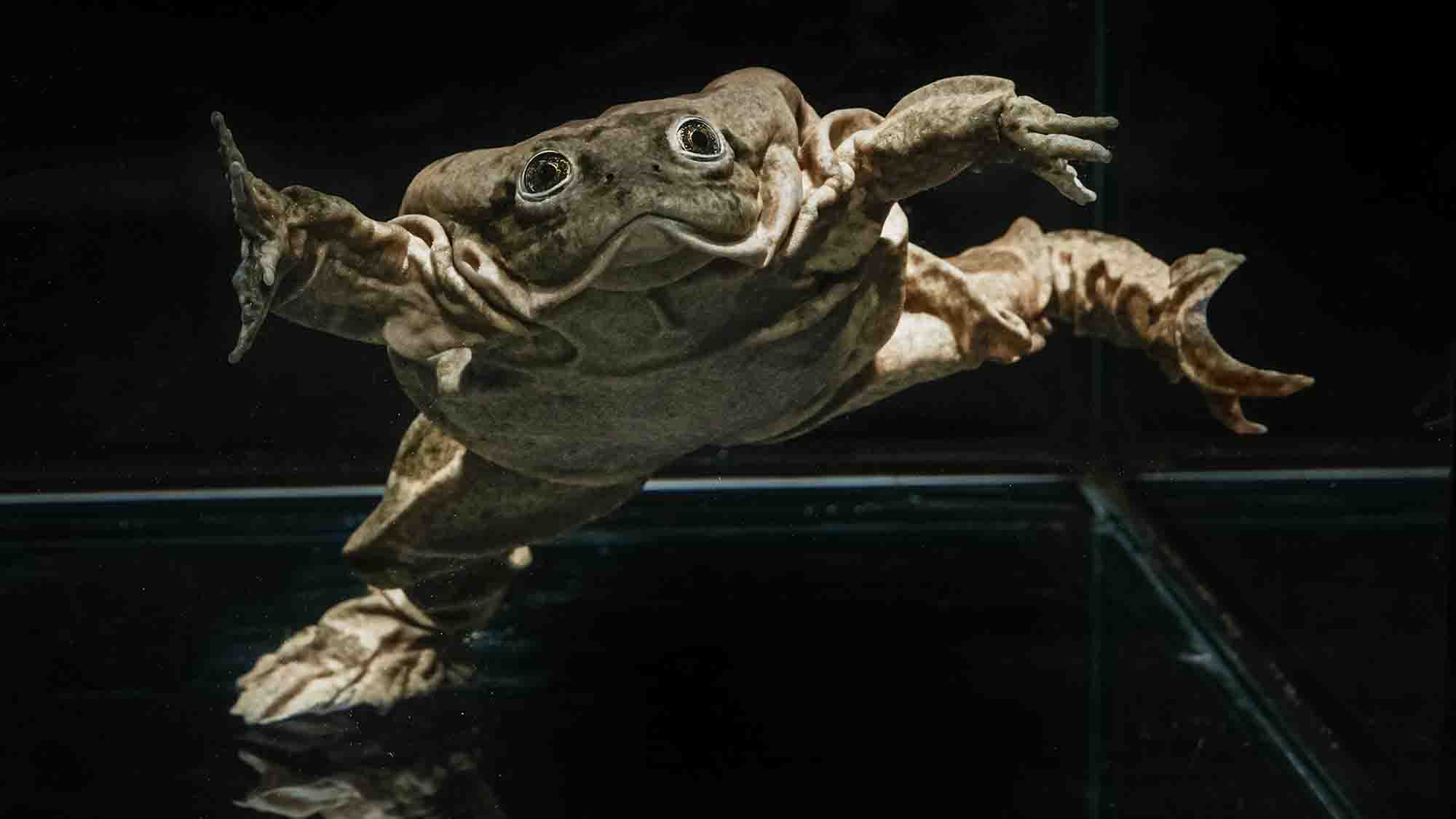Critically endangered frogs show off the amazing underwater press-up skills that help them survive in the wild.
The huge aquatic Titicaca water frog is found only in a single water system in the Lake Titicaca basin on the border of Bolivia and Peru.
The species struggles to survive in poorly oxygenated waters in low oxygen altitudes in the Andes.
Now scientists from Brown University, Rhode Island, USA, and Austria’s Schoenbrunn Zoo, in Vienna have discovered its secret method of improving its chances of survival.
The loose-skin species, also known less flatteringly as the scrotum frog, does push-ups from the bottom of a waterway to stretch its skin and provide the largest possible surface area.
The method, say scientists in a study, means the frogs can absorb as much oxygen as possible from the boosted skin surface.
Video footage of the trials shows the frogs in a clear tank as they practice their push-ups to keep the oxygen flowing when it is gradually replaced by nitrogen.
And a second clip shows the skills come in handy when they want to snaffle up their favourite snacks at feeding time.
Schoenbrunn Zoo director Stephan Hering-Hagenbeck said in a statement obtained by Newsflash: “The folds in the frog’s skin increase its surface area.
“The ‘push-ups’ move the folds, allowing oxygen to be absorbed from the surrounding water.
“This is particularly advantageous in the frogs’ natural habitat, Lake Titicaca in western South America.
“There, oxygen-poor conditions often prevail due to the altitude and the resulting low air pressure.”
Research associate Doris Preininger added: “The ‘push-up behaviour’ may improve the gas exchange between the frog’s skin and the water, as the oxygen-poor boundary layer around the skin folds is interrupted.
“This behaviour represents an exciting adaptation of the animals to quickly meet their oxygen requirements.”

Schoenbrunn Zoo continued: “The Titicaca water frog is kept backstage at the zoo and successfully bred. This enables important research work such as this to be carried out.”
In the wild, the frog, Telmatobius coleus, can grow up to 20 centimetres (7.8 inches) from head to rump.
It is listed as ‘Critically Endangered’ on IUCN’s Red List of Threatened Species.
The study titled ‘Acute hypoxia exposure rapidly triggers behavioral changes linked to cutaneous gas exchange in Lake Titicaca frogs’ has been published in the peer-reviewed journal Behavioural Processes.
To find out more about the author, editor or agency that supplied this story – please click below.
Story By: Georgina Jedikovska, Sub-Editor: Georgina Jedikovska, Agency: Newsflash
The Ananova page is created by and dedicated to professional, independent freelance journalists. It is a place for us to showcase our work. When our news is sold to our media partners, we will include the link here.




